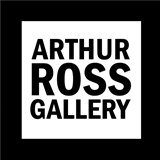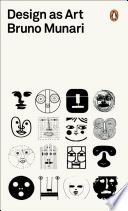The process of developing my photo essay over the course of two months was an interesting one. For worse or for better, very little of my original idea survived to the final stages of the process.
If this project taught me anything (in fact, it taught me many things), it is that sticking to your original vision of a final product can actually limit its development. As my Digital Layout professor KC Witherell says, “Don’t get married to an idea.” This project, like all others at Parsons, put me to the test: could I gracefully allow my ideas and my work to change from my original vision?
When we were first assigned the project, I had my heart set on photographing the performers who jump on the subways and dance on the poles; I saw them everywhere I went during my first month in New York, and I thought that the way the performers affected the body language of the subway riders was very interesting. People immediately cast their eyes to the floor, to the wall, anywhere but at the performers. By betraying even the slightest hint of amusement or attention, it was as if the subway riders were entering into a contract with the performers: you must tip us.
Alas, the very day I decided to photograph the contrast between the performers’ body language and the subway riders’ body language was the last day I saw the subway performers until–get this–3 days after the final photo essay was due. I spent the first weekend of the project riding around the city for hours until finally I decided to cast a wider net and photograph performers anywhere I found them, and any form I found them. I photographed violinists, break dancers, saxophonists, children’s entertainers, bands; everyone I could find. I tried to get close-ups of the performers’ faces and the spectators’ faces, looking for contrasts.
After the first critique with Michael Durham, former photojournalist at Life Magazine, it was decided that the close-ups weren’t really working, and in fact the most interesting photos were of the breakdancers. Photos from days of photographing were discarded.
At that point, too, I needed to come up with a concept for the text that would accompany my photos when they were bound into my final book. Luckily, with inspiration from Michael Durham, the idea to interview the breakdancers for my text came quickly, and the following week I went back to City Hall where I had initially seen the street performers to ask some questions. After weeks of observing street performers, I had grown very curious about the lives they lead.
When I got to City Hall, I saw that many of the performers I had originally photographed were there again in the same spot, nearly a month later. I watched a performance, took some photos, and then approached some of the men for an interview. I am naturally shy, so the thought of choosing people as my subjects in the first place had been a bit nerve-racking; the thought of interviewing my subjects was even more so. Ultimately, though, I’m so glad I chose to do these things for my work, because the results were so rewarding. This is the work that I’m most proud of (so far) at Parsons.
With my photos taken and text written, I set about the task of laying out my book and then binding it. This took some weeks of revision as well. Some photos of my mock-ups:
This slideshow requires JavaScript.
I decided to make my book into a circle accordion. That way, my book would fit neatly into a cover and could be pages through as an ordinary book, but could also be displayed in a circle to mimic a street performance: photographs of performers in the center; spectators circling around. I had to scale my book down slightly for practical reasons. Finding reasonably priced and manageable ways to print a document that’s 6.25 inches by 85 inches was unsurprisingly a bit of a mission!
Here are some photos of the (almost) final version (small refinements will be made before the end of the semester):
This slideshow requires JavaScript.
Though the process was long, this was a project that I enjoyed from start to finish, and learned many things along the way. I discovered that I love bookbinding, and that interviewing subjects isn’t half bad either. I’m looking forward to producing many more photo essays in the future!
This slideshow requires JavaScript.









 “The advertising agency Serino/Coyne created a muscular poster design for the sex-and-power drama about a wealthy businessman (Mr. Pacino), his fiancée and a phone call that upends their lives. It’s a bold treatment that features the sinewy back of a pricey-looking jet, above. Mr. Pacino’s name and the show’s title are rendered in clean, oversize block letters that change colors as they overlap the jet’s tail”.
“The advertising agency Serino/Coyne created a muscular poster design for the sex-and-power drama about a wealthy businessman (Mr. Pacino), his fiancée and a phone call that upends their lives. It’s a bold treatment that features the sinewy back of a pricey-looking jet, above. Mr. Pacino’s name and the show’s title are rendered in clean, oversize block letters that change colors as they overlap the jet’s tail”.













